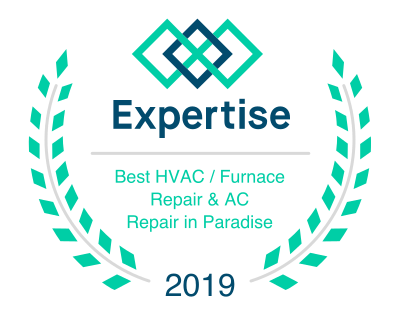Are you concerned about the indoor air quality in your home in Las Vegas? Then, it may surprise many people to learn that many household products, such as solvents, flooring, and furnishings, contain high amounts of VOCs, including harmful substances like toluene, xylene, benzene, and formaldehyde. The first step to improving the indoor air quality in your home is to better understand what VOCs are. Then, you need to understand how these emissions could be negatively affecting your home environment, particularly your respiratory health.
What Are VOCs and Where Do They Come From?
Volatile organic compounds (VOCs) are gases that are emitted by a variety of sources. Common household products contain high amounts of potentially harmful VOCs. Some of these emissions include:
- Building materials like plywood, glues, and particleboard
- Personal care products like hair sprays and perfumes
- Cleaning products like cleansers, disinfectants, and aerosol sprays
- Home improvement products like paints, varnishes, and paint strippers
- Craft supplies like permanent markers, modeling cement, and spray adhesives
When VOCs enter into the air, they can transform into a gas or vapor form. But there is one particularly concerning attribute of volatile organic compounds. They don’t leave your environment once you stop using products that contain them. This persistent release of VOCs from materials such as flooring and furnishings is especially concerning.
How VOCs Can Affect Your Health
VOCs include a variety of different chemicals that can negatively impact your health. And there are some potential short- and long-term health risks associated, particularly related to your respiratory system.
Risks include headaches, chest congestion, breathing difficulties, and sore throat. Some also experience fatigue, nausea, loss of coordination, and eye irritation. Plus, VOCs put family members with lung sensitivities at a greater risk of serious health issues.
Different VOCs will cause different health problems indoors. But their effects don’t stop there. VOCs that are found outside are dangerous to the atmosphere. When these VOCs interact with nitrogen oxides, it results in ozone pollution.
What Levels of VOCs Are Considered Dangerous?
Volatile organic compound levels in the air of a home can range in severity. So higher levels of VOCs are more dangerous to human health. And that’s simply because they contribute to poorer indoor air quality as these substances, including formaldehyde, xylene, toluene, and benzene, and off-gassing from materials such as solvents and flooring increase their quantity.
Of course, minimizing your exposure to harmful VOCs is important. But that undertaking is sometimes easier said than done.
A major indicator for high levels of VOCs within a home is the health of the occupants. When you have high VOC levels, you or your family members may experience aggravated health symptoms like the ones mentioned above.
So what do you do if you feel that poor indoor air quality is negatively affecting your health? You should consider testing the air in your home. You might just find contaminants like VOCs and other pollutants. Numerous types of air quality monitoring devices can quickly test for different contaminants within the air.
How Long Do VOCs Remain in the Air?
When volatile organic compounds get into a home environment, they disperse their chemicals throughout the air. This is done through a process referred to as off-gassing. Then, these chemicals can be emitted for quite some time and linger on surfaces like floors, furniture, and countertops.
Furthermore, the off-gassing dispersion of VOCs could remain within the home for days, weeks, and even months. But the exact length of time that volatile organic compounds will remain within the airspace will largely depend on:
- The concentrations levels already released
- How efficiently the home is ventilated
- The amount of airflow there is
How To Measure Volatile Organic Compounds
Having the ability to measure different pollutants such as VOCs inside your home can be extremely beneficial. Indoor air quality monitoring and testing devices first measure the presence of contaminants through various methods.
And some of these devices work through smart devices for greater convenience. Then, the results of these tests will measure VOC contaminations over time. And this can be useful for helping you keep track of the activity of pollutants within your home.
Steps You Can Take to Reduce Exposure to VOCs
Keeping your family safe is a top priority. And there are several steps you can take to reduce exposure to VOCs within your home. So the simplest way to keep volatile organic compounds out of your home is to refrain from using products like solvents, flooring, and furnishings that contain them.Consider replacing bleach-based cleaning products, an example of regular household items with potentially harmful content, with natural alternatives to protect the health of inhabitants of your homes. Before purchasing new cleaning products, research what harsh chemicals they may contain and their potential health effects, such as triggering asthma or even cancer.
So if you’re planning to touch up walls in your buildings or homes, purchase low-VOC paints. This simple shift in your activities can go a long way in reducing exposure to harmful air pollutants. Make sure you don’t allow smoking inside or near your home. Smoke contains many pollutants. In addition, minimize the use of scented products like candles, aerosol sprays, and plug-in deodorizers, which may irritate the nose and exacerbate respiratory conditions.
Of course, preventing complete exposure to VOCs may not always be a possibility. So if you suspect the presence of VOCs within your home environment, make sure your home gets proper ventilation. You can open windows or turn on your exhaust fan when you’re using products that emit VOCs.
Also, don’t store opened containers of paints or other VOC-containing products inside your home. So once you’re done, throw away empty containers instead of storing them in your garage. Then, from there, just remember to follow your local safety disposal ordinances.
A subgroup of volatile organic compounds are semi-volatile organic compounds. These SVOCs feature a higher molecular weight than VOCs. Homeowners can get in contact with SVOCs through multiple avenues by:
What Are SVOCs and How Do They Differ From VOCs?
SVOCs have slightly lower volatility concentration levels than VOCs. So they may be somewhat less toxic than VOCs. And SVOCs are not as easily dispersed through the atmosphere as VOCs, either.
- Breathing air polluted with airborne particles
- Touching surfaces coated with SVOCs
- Ingesting dust contaminated with SVOCs
- Consuming foods containing SVOCs
In most instances, semi-volatile organic compounds make their home on top of furniture and other surfaces. SVOCs can remain on surfaces for a long period of time. So simply eliminating the sources of these contaminants may not necessarily ensure that they won’t continue to pollute your indoor air.
These substances are slowly released from their sources. And this happens over longer periods of time. Some common sources of semi-volatile organic compounds include cookware, fire retardants, and pesticides.
There are ways to limit your exposure to volatile organic compounds. Start by researching any products you purchase. So you want to make sure they contain low amounts of VOCs. But if possible, consider purchasing products that contain only natural ingredients.
How to Improve Your Indoor Air Quality
If air quality is a concern for you in your homes or buildings, there are several additional steps you can take to promote a cleaner, healthier environment. First, make sure you replace your AC unit’s air filters at least once every few months. Do this to prevent dust and dirt particles from re-circling throughout your home. Then, consider investing in an air purifier.
An air purifier uses a series of filters and internal fans to remove potentially harmful pollutants including air pollutants, whose effects might be as severe as cancer or asthma. These include things like pollen, dust, dirt, and bacteria from the air. It then circulates cleaner air back into the room. This purifying process repeats several times an hour to promote healthier indoor air quality.
Finally, have your air ducts cleaned by a professional air conditioning company. And you want to do this at least once every two years. This will prevent contaminants like dust mites and other particles from spreading throughout your home environment through your air conditioning unit.
Have questions about your indoor air quality in Las Vegas? Contact the experts at The Cooling Company for more information. Dedicated to excellent workmanship, we specialize in quality heating and cooling repairs, and installations. We also cover maintenance services and ductwork services.
Contact Your IAQ Experts
Have questions about your indoor air quality in Las Vegas? Contact the experts at The Cooling Company for more information. Dedicated to excellent workmanship, we specialize in quality heating and cooling repairs, and installations. We also cover maintenance services and ductwork services.












